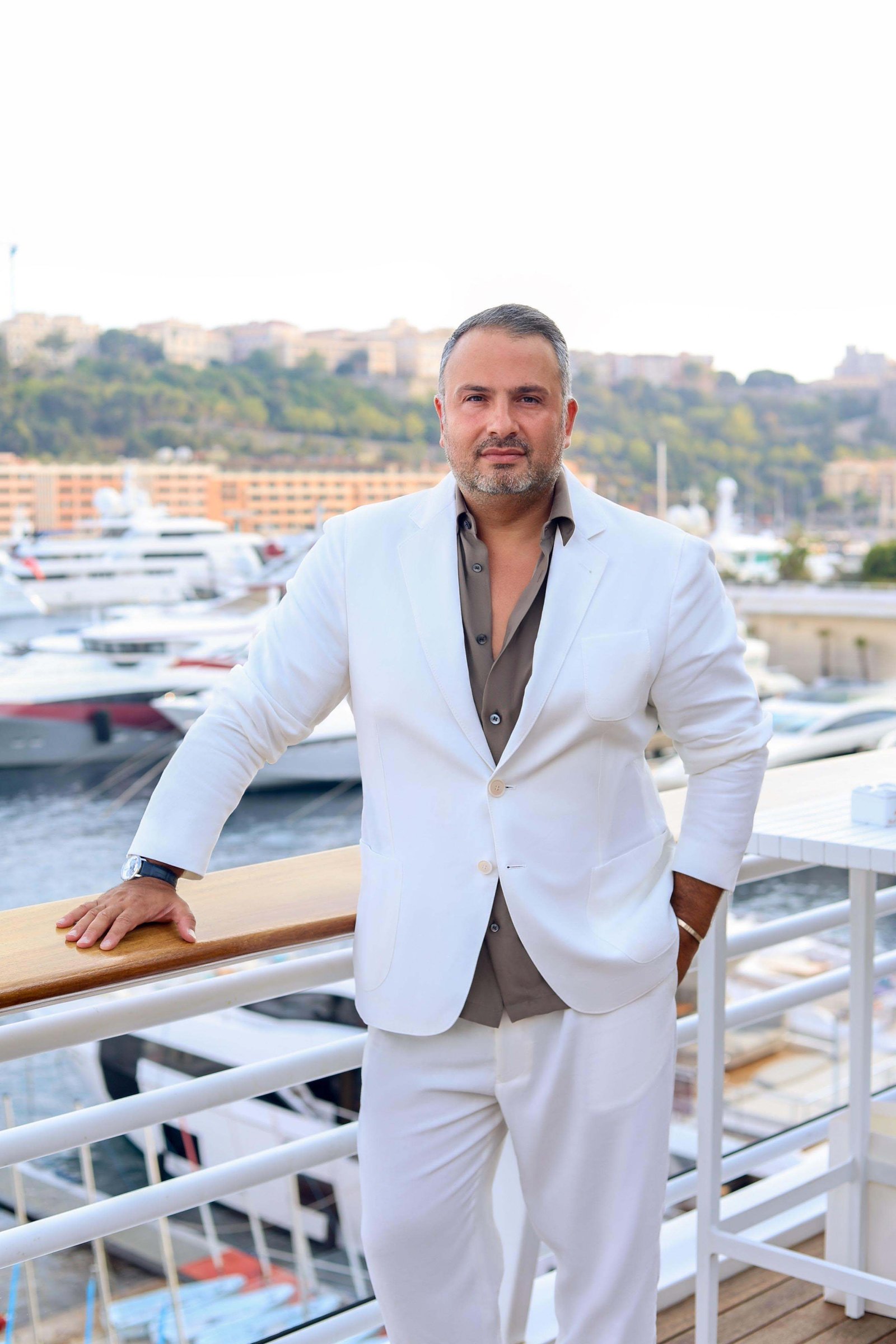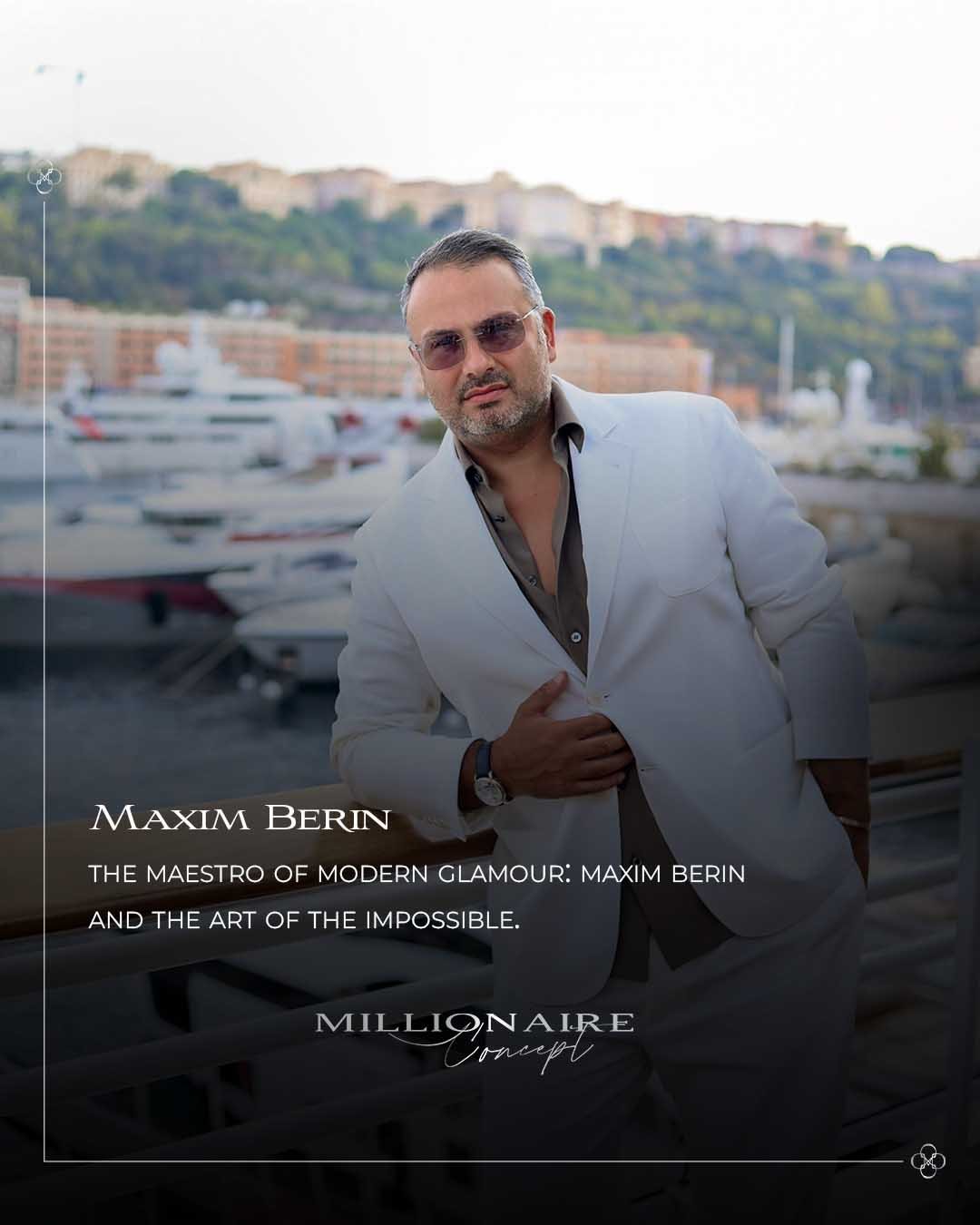From Monte Carlo to Miami, the European impresario rewriting the rulebook on luxury entertainment.
There are producers — and then there is Maxim Berin. The citizen of Germany, Monte Carlo-based, CEO and co-founder of Berin Iglesias Art Holding has spent more than two decades turning high culture and high gloss into a single, irresistible language. Part conservatory-trained musician, part global dealmaker, Berin is the quiet architect behind some of the most rarefied nights on earth—where Andrea Bocelli shares a billing philosophy with Mariah Carey, and couture meets concert hall with a champagne hush.
Born into a family where virtuosity was dinner-table conversation (his father is renowned conductor Prof. Arkady Berin), Maxim learned early that excellence is a discipline. He trained as a saxophonist before earning credentials in cultural production and management in Germany—Hochschule für Musik Detmold (Dortmund) and the University of Cologne—an academic polish that now underpins his famously meticulous shows.
Today, Berin Iglesias Art Holding operates like a maison with global ateliers. Headquarters in Monaco and Dubai anchor a constellation of offices spanning Italy, Spain, the UK and France, through the U.S. and UAE, and across Central and West Asia—Austria, the Czech Republic, Israel, Turkey, Uzbekistan, Kazakhstan, and Azerbaijan among them. The calendar is plotted years ahead, a choreography of stadium lights and velvet-rope salons that glide from the Côte d’Azur to the Gulf and on to Latin America’s most magnetic capitals.

If luxury had a festival passport, it would read: Big Art Festival. Conceived by Berin as a traveling salon for the world’s upper tier, Big Art unfolds in destinations synonymous with sprezzatura—Monaco, Courchevel, London, Madrid, Miami, Dubai, Forte dei Marmi, Capri, Porto Cervo, Portofino, Istanbul, New York. And there is even more ahead, like Marbella and St.Barts. The lineups are the stuff of legend: Robbie Williams one night, Rita Ora the next; Will Smith and Eros Ramazzotti in the same seasonal arc; Andrea Bocelli in duet with architecture, Maluma turning marble piazzas kinetic. Pop, rock, jazz, classical—curated not as genres but as textures. Big Art Festival is a truly unique format — each evening shines like a rare and radiant jewel. Every event brings new emotions and unforgettable experiences, becoming a treasured memory for all who attend.
Berin’s formula? Think less “tour” and more “timepiece.” Every engagement is engineered with the precision of a limited-edition watch: unseen mechanisms, flawless face. That finesse has fostered enduring collaborations with prestige festivals—Monaco Summer Festival, Starlite Marbella, Cap Roig in Spain, the Canary Islands Music Festival—and culturally defining platforms like the Venice Biennale, where the company has supported exhibitions in partnership with national arts foundations. In 2022 and 2025, the playbook scaled sport, bringing chart-toppers to FIFA World Cup stages in collaboration with global carriers—proof that the Berin aesthetic travels seamlessly from biennale to big league.
The roster reads like a platinum collection: Elton John, Eros Ramazzotti, Enrique and Julio Iglesias, Rita Ora, Mariah Carey, José Carreras, Jonas Kaufmann, Plácido Domingo, Anna Netrebko, Seal, Scorpions, Metallica, Jamiroquai, Backstreet Boys, Maroon 5, OneRepublic—and it stretches further each season. The house vocabulary moves effortlessly between grand opera and arena pop, black-tie galas and benefit balls (including The Love
Ball for Natalia Vodianova’s Naked Heart Foundation), with private commissions for luxury houses in high jewelry, fashion, and automotive.

None of this scale happened in a vacuum. In 2018, Berin’s creative and commercial alliance with partner Jorge Iglesias propelled the brand from industry insider to global marquee. Together, they’ve built a modular model: concerts, shows, exhibitions, charity galas, and exquisitely bespoke soirées that can bloom in a Monte-Carlo salon or a desert metropolis. The UAE remains a special focus—supporting the region’s fast-rising cultural infrastructure—while eyes are trained on new progressive markets, from Saudi Arabia outward, with Latin America an increasingly star-studded chapter.
Berin’s genius is not just in who appears on stage, but how the evening lives in memory. The pacing, the acoustics, the way a string section lifts the moment a couture hem sweeps past—all of it is directed with a conductor’s ear and a curator’s eye. It’s entertainment as environment; spectacle as soft power. In a decade defined by the collision of tech and taste, Maxim Berin’s world insists on a different alchemy: humanity, precision, and the shimmer of the exceptional.







